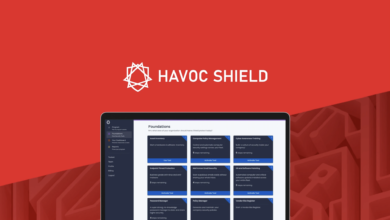Unpacking Log4j: A Cybersecurity Playbook for Executives

This cybersecurity playbook is inspired by Amy Chaney’s experience with a major cybersecurity event that rattled the industry not too long ago: the infamous Log4Shell vulnerability.
She recently shared her firsthand account on CyberOxTales Podcast, of being in the thick of things at JPMorgan Chase during the crisis.
From understanding the intricacies of vulnerabilities to managing global teams tasked with rapid response, Amy sheds light on the critical importance of preparation, modernization, and teamwork.
The Playbook
Objective:
Key goals include:
- Establishing a comprehensive and accurate inventory system for all software assets to enable rapid identification and mitigation of vulnerabilities.
- Developing a clear and well-practiced incident response plan, which includes war room setups and tabletop exercises, to ensure a coordinated and effective approach to handling cyber incidents.
- Implementing automation for upgrades and patches across systems to minimize human error and ensure timely updates are applied.
- Ensuring modern, agile, and robust system architectures that are resistant to single points of failure and can adapt to emerging threats.
- Employing a strategic communication protocol that clearly defines roles, responsibilities, and action steps – balancing both descriptive and prescriptive guidance to enable precise responses during an event.
- Fostering a culture of continuous improvement and learning that prioritizes security in all aspects of technology development and operations.
Step 1: Ensure Comprehensive Inventory Management
Objective: Ensure that an accurate and up-to-date inventory of all assets is maintained, including hardware, software, data, and dependencies.
Action Items:
- Conduct regular scans of all assets
- Classify assets according to their criticality and impact on the business
- Maintain a configuration management database (CMDB) with all relevant details for each asset
- Incorporate third-party and vendor asset information into the CMDB
Step 2: Run Incident Response Tabletop Exercises
Objective: Validate the effectiveness of the incident response plan and improve team preparedness through simulated events.
Action Items:
- Schedule and conduct regular tabletop exercises involving all relevant stakeholders
- Develop scenarios including, but not limited to, common and emergent threats
- Review and revise the incident response plan based on lessons learned during exercises
- Ensure smooth coordination between internal teams and external partners
Step 3: Create a Verification and Validation Process
Objective: Create a process flow for verifying the effectiveness of defenses and the implementation of security controls.
Action Items:
- Automate validation checks for security configurations
- Regularly test backup and recovery processes
- Conduct penetration tests and vulnerability assessments
- Utilize threat intelligence to inform the validation process
Step 4: See to Security-Centric Architectural Design
Objective: Integrate security considerations into the architectural design process to prevent single points of failure and enhance resilience.
Action Items:
- Engage security teams during the initial design stages of any project
- Advocate for modular and microservices architectures to reduce impact radius
- Implement redundancy and failover mechanisms
- Adhere to the principle of least privilege in system design
Step 5: Understand Descriptive vs. Prescriptive Communication
Objective: Tailor communication styles to the appropriate context – strategic planning (descriptive) versus active incident response (prescriptive).
Action Items:
- During planning, provide detailed descriptions of how systems should be constructed or designed for security
- In an active incident, issue clear and concise orders, detailing who needs to perform what actions, where, and how.
Step 6: Emphasize Modernization and Automation of Processes
Objective: Ensure the organization’s technology stack is current and that security processes are automated to reduce manual errors and fatigue.
Action Items:
- Develop a modernization roadmap for legacy systems
- Implement automated patch management and update processes
- Utilize data-driven decision models to inform security operations
- Adopt tools for continuous monitoring and real-time alerts
Step 7: Data-Driven Accuracy in Reporting
Objective: Achieve a high level of precision and clarity in security data reporting to facilitate swift and informed decision-making.
Action Items:
- Integrate security information and event management (SIEM) systems for centralized logging and alerting
- Establish a clear line of communication for data-driven insights
- Employ advanced analytics for incident forensics and prediction
Step 8: Prepare and Develop Your Playbook in Advance
Objective: Develop and maintain a security playbook for immediate action in the face of threats, prioritizing speed and agility in response efforts.
Action Items:
- Document incident response protocols and checklists
- Predefined roles and responsibilities within the incident response team
- Enable quick mobilization of resources to handle incidents
- Perform regular playbook reviews and updates
Listen to Amy’s episode of the CyberOXtales Podcast where she discusses her experience responding to Log4j – https://open.spotify.com/show/3xOhQD1azkC8cfiDy6Vxsk
The post Unpacking Log4j: A Cybersecurity Playbook for Executives appeared first on OX Security.
*** This is a Security Bloggers Network syndicated blog from OX Security authored by OX Security. Read the original post at: https://www.ox.security/unpacking-log4j-a-cybersecurity-playbook-for-executives/



